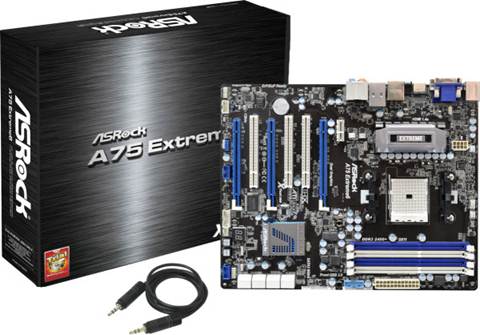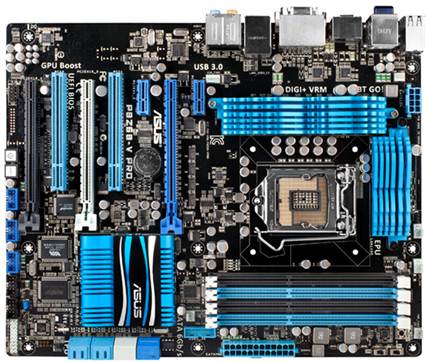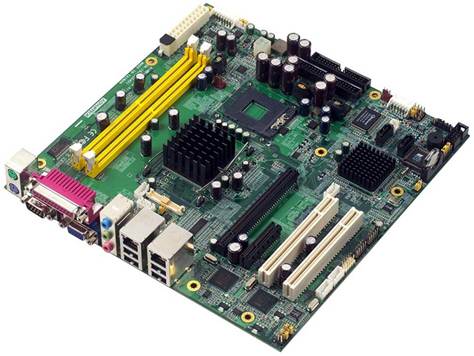Choosing the right motherboard
Once you’ve chosen the processor that’s
right for your new build, you need to pick a motherboard that’s appropriate for
your requirements. A huge variety of motherboards exist, with the inventories
of a single manufacturer spanning hundreds of different coexisting products. To
make your choice easier, it’s important to choose the chipset you want to
support your chosen socket type. While different motherboards ship with all
manner of different features on board, several of these are defined by the
chipset. For the AMD FM1 socket, for instance, there are just two chipset: A55
and A75. The former is the cheaper of the two and has 3Gbps SATA ports and
support for 14 USB 2.0 ports. The A75, on the other hand, comes with all 6Gbps
SATA ports and supports ten USB 2.0 and four USB 3.0 ports natively. Naturally,
if budget allows, the A75 solutions are a stronger choice, but you should
choose a board that has the features you need at a price you can afford. Often
by going for a value-centric brand like ASRock rather a premium brand like Asus
or Gigabyte, you can get a premium grade chipset for the same price as a
cut-down version.

ASRock – A75 Extreme6
For Socket 1155, things get a lot more
complicated, as Intel has a plethora of different offerings. Some of these are
specific to large corporations, however, so that leaves us with four relevant
chipsets for home users. At the entry level, we have the H61 chipset. This
offering has no support for 6Gbps devices or RAID and lacks the wealth of
PCI-Express resources of its more expensive stablemates. The next chipset up is
the H67, which supports two 6Gbps drives natively and also allows for more USB
devices and GPU overclocking. Next up we have the P67, which differs from its H
series compatriots in that it allows CPU overclocking, but has no support for
the integrated GPU. With the Z68 chipset, Intel finally let its customers have
their cake and eat it, with all of the features of H67 and P67 wrapped up into
a single chipset that also adds two additional features: Intel Smart Response
Technology (SSD caching) and Quicksync, which allows you to tap into the
capabilities of the on-chip GPU and use them for video transcoding even if
you’re using a dedicated video card as your primary VGA solution.

Intel Z68 chipset
If you simply must have an AMD FX processor
for its multi-threaded prowess, then you should opt for a motherboard with the
990FX chipset, assuming you don’t need an integrated GPU. If you do, then you
have the 880G chipset, which features a Radeon HD4250 GPU. Truth be told,
however, if you can afford to spend over $225 on your CPU, you can probably
budget for a $45 discrete video card as well.
Once you’ve selected the right chipset for
your build, you will normally still find at least half a dozen different
options from each manufacturer to choose from, if not more. These will differ
in several key ways. First of all, you’ll have different form factors:
mini-ITX, micro-ATX and ATX. The first of these is the smallest and is designed
for micro-tower PC systems. Micro-ATX is considerably larger and will be the
right choice if you plan on building a compact yet fully featured desktop PC.
Finally, ATX is the largest form factor that will support the widest array of
add-in cards, but will need at least a midi-tower case to accommodate the additional
height.

Micro-ATX motherboard
On choosing the right size of board, you
should finally have whittled down the number of options to a handful from each
manufacturer. Typically, these will now differ in the various additional bells
and whistles they support. More expensive and elaborate boards will often have
extra connectivity such as eSATA and FireWire, as well as support for
additional internal drives via secondary SATA controllers. Higher-end options
may also offer SLI and CrossFire support, granting the ability to use more than
one video card at a time. Higher-end boards will usually have better voltage
regulation circuitry, so if overclocking is high on your list of priorities,
it’s sometimes worth paying extra for a board with features you don’t necessarily
need just to gain the superior overclocking support they offer.
Most manufacturers offer extremely
expensive special edition motherboards. From Asus have the Republic of Gamers
series, from MSI you have the Bing Bang Xpower boards and from Gigabyte the
Assassin series. Unless you plan on cooling your system with liquid nitrogen
and want to use them to set some new overclocking records, these boars
typically offer diminishing returns for your investment – for feature rich
boards that don’t cost the earth, check out ASRock’s Extreme series products.